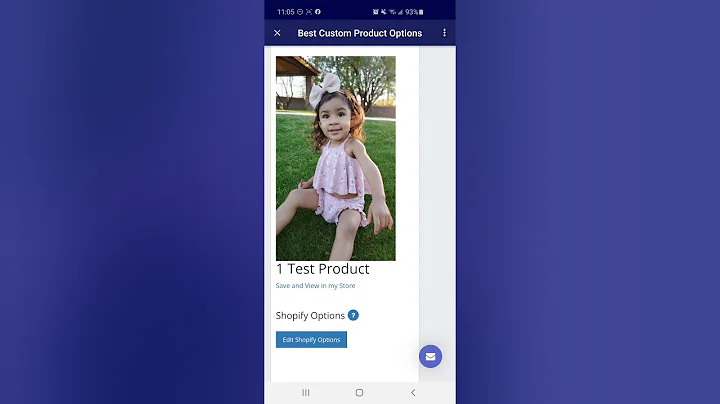Ditching Drop Shipping: Unlocking the Power of Brand Building
Table of Contents
- Introduction
- Why Drop Shipping?
- The Downsides of Drop Shipping
- The Power of Brand Building
- Selling Products with Good Quality
- Providing Excellent Customer Service
- Building a Brand with Your Values
- Alternative Methods to Drop Shipping
- Fast Worldwide Shipping without Inventory
- Conclusion
Why I Quit the Standard Method of Drop Shipping for Good
In this article, I will share with you the reasons why I decided to quit the standard method of drop shipping and explore alternative strategies for building a successful e-commerce business. While drop shipping may seem like a lucrative opportunity with its promise of fast money and easy setup, I have discovered that it comes with its own set of challenges and limitations. Through my personal experience and success in brand building, I aim to provide you with the information and insights that I wish I had known when I first started out in e-commerce.
Introduction
At the beginning of my e-commerce journey, drop shipping was the go-to method for many aspiring entrepreneurs. It offered the allure of quick profits and minimal investment. However, as I delved deeper into this business model, I soon realized its shortcomings. Drop shipping is not as reliable or profitable as it may seem at first glance. In fact, many drop shippers struggle to make substantial profits due to the volatile nature of the industry and the oversaturation of the market. In this article, I will explain why I made the decision to quit drop shipping and focus on brand building, which has proven to be a more lucrative and sustainable approach.
Why Drop Shipping?
For those unfamiliar with drop shipping, it is a fulfillment method where online retailers don't keep the products they sell in stock. Instead, when a store sells a product, it purchases the item from a third party and has it shipped directly to the customer. Drop shipping has gained popularity due to its low barrier to entry and the ability to start an e-commerce business with minimal upfront costs. Additionally, drop shipping allows for quick product testing and easy scalability.
The Downsides of Drop Shipping
While drop shipping may initially seem appealing, it comes with its fair share of drawbacks. Firstly, the profit margins in drop shipping are often low, with most drop shippers experiencing a profit margin of around 10-15%. This is before factoring in expenses, taxes, and liabilities. The reality is that many drop shippers who claim to have made millions of dollars are not actually raking in significant profits. Moreover, scaling a drop shipping business becomes more challenging when you have to split the income between multiple partners.
Another significant challenge in the drop shipping industry is the constant uncertainty and the ever-present risk of having your business shut down overnight. As a drop shipper, you are heavily reliant on payment processors, suppliers, and advertising platforms. If any of these elements fail or experience issues, your business could suffer severe consequences. I have personally experienced payment processors shutting down my accounts and suppliers scamming me, resulting in significant financial losses. Additionally, advertising platforms have often restricted or terminated my ads, severely impacting the flow of sales.
Furthermore, drop shippers often find themselves targeting the same pool of customers - the three percent of consumers who are already in a buying mindset. While these impulse buyers can provide some initial revenue, the market becomes oversaturated, leading to fierce competition among drop shippers. To truly succeed in e-commerce, we need to tap into the larger market of consumers who require education and a genuine connection to the brand.
The Power of Brand Building
Understanding the limitations and shortcomings of drop shipping led me to seek an alternative approach - brand building. By focusing on building a legitimate brand rather than just selling products, I have been able to overcome many of the challenges I faced in the drop shipping industry. Brand building allows for long-term success, higher profit margins, and the ability to differentiate yourself in a crowded market.
Selling Products with Good Quality
One of the fundamental components of successful brand building is selling products with good quality. While many drop shippers prioritize finding cheap products, this often leads to subpar customer experiences and a negative reputation. By sourcing and selling products of high quality, you can attract loyal customers, reduce returns and refunds, and build a positive brand image.
Providing Excellent Customer Service
Customer service is a vital aspect of any successful e-commerce business. By prioritizing exceptional customer service, you can minimize chargebacks, refunds, and customer disputes. Implement customer-centric policies that demonstrate your dedication to customer satisfaction. A satisfied customer is more likely to become a returning customer and recommend your brand to others.
Building a Brand with Your Values
To truly differentiate your business and create a brand that resonates with customers, it is crucial to infuse your values into every aspect of your brand. Consider what values are important to you and how you can incorporate them into your products, messaging, and customer interactions. Building a brand that aligns with your personal values creates authenticity and fosters trust among consumers.
Alternative Methods to Drop Shipping
As I ventured into brand building, I discovered alternative methods to achieve fast worldwide shipping without the need for inventory. These methods offer advantages over traditional drop shipping approaches and can be leveraged by beginners without significant capital. By adopting these strategies, you can create a more reliable and efficient e-commerce business.
Conclusion
While drop shipping may seem like a promising opportunity, it comes with its fair share of challenges and limitations. Brand building offers a more sustainable and lucrative approach to e-commerce. By prioritizing quality products, excellent customer service, and infusing your values into your brand, you can create a business that stands out in a crowded market. Alternative methods to drop shipping, such as fast worldwide shipping without inventory, offer further opportunities for success. If you are serious about building a successful e-commerce business, it is time to pivot from the limitations of drop shipping and embrace the power of brand building.
Highlights
- The limitations and challenges of drop shipping in the e-commerce industry
- The importance of brand building for long-term success and higher profit margins
- Selling quality products and providing excellent customer service for customer satisfaction and brand loyalty
- Infusing personal values into your brand to create authenticity and trust among consumers
- Exploring alternative methods to traditional drop shipping for a more reliable and efficient business model
FAQ
Q: Is drop shipping a profitable business model?
A: Drop shipping has the potential for profitability, but it comes with several challenges and limitations that can impact success.
Q: Can brand building lead to higher profit margins compared to drop shipping?
A: Yes, brand building often allows for higher profit margins as it focuses on selling quality products and establishing customer loyalty.
Q: Are there alternative methods to drop shipping that can offer more advantages?
A: Yes, alternative methods such as fast worldwide shipping without inventory can provide a more reliable and efficient business model.
Q: Is it possible to transition from drop shipping to brand building?
A: Yes, it is possible to pivot from drop shipping to brand building by focusing on selling quality products, providing excellent customer service, and infusing personal values into your brand.






















